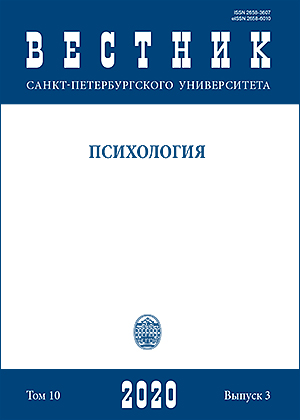Psychodiagnostic method “Prenatal contact”: Structure and psychodiagnostic opportunities
DOI:
https://doi.org/10.21638/spbu16.2020.307Abstract
The article presents the author’s psychodiagnostics method “Prenatal contact”. The method can determine the quality of psychological contact between a pregnant woman and her unborn child (children) in the late stages of single and multiple pregnancies. The stages of the method’s creation are described in the article. Russian and foreign studies, as well as verbal psychodiagnostic techniques, devoted to a woman’s experiences during pregnancy are analysed. In the process of clinical work, the significance of a child’s movements for women in late pregnancy was revealed. Prenatal contact was defined as cognitive, affective, and behavioural activity of women for the purpose of establishing a connection with the unborn child and interaction with him. It is suggested that in the process of establishing this contact, maternal qualities begin to develop. These qualities will further influence the quality of interaction between the mother and the infant and, as a result, the quality of the child’s attachment to the mother. There is sensitivity and responsiveness to the child’s signals, acceptance of the child, and emotional involvement by being in contact with him. The results of statistical evaluation in a study of 168 pregnant women with one foetus (99 women) and multiple (69 women), with a gestation period of 24 to 41 weeks, aged 23 to 43 years and having different prenatal history are presented. The test’s scales were checked for their reliability. The following names of scales are suggested: “Interaction with the child (children)”, “Sensitivity to the movements of the child (children)”, and “Intensity ‘of emotional messages’ to the child (children)”. A detailed description of each scale is provided, the manifestations of a particular result in clinical psychological practice are described, and the possibilities of using this information to provide psychological assistance to pregnant women are outlined.
Keywords:
prenatal experience, late pregnancy experience, movements of foetus, imagination of child (children), maternal characteristics
Downloads
References
References
Downloads
Published
How to Cite
Issue
Section
License
Articles of "Vestnik of Saint Petersburg University. Psychology" are open access distributed under the terms of the License Agreement with Saint Petersburg State University, which permits to the authors unrestricted distribution and self-archiving free of charge.




